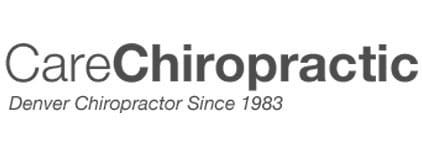Whiplash Frequently Asked Questions
1. Why is it that my car has little to no damage, yet I am in pain and miserable?
Despite popular belief, there is no correlation between the amount of vehicle damage versus the amount of injury in a motor vehicle collision. Many, many variables come into play in a crash, and ultimately devastating injury, even death, can occur in collisions with little or no outward signs of damage to the vehicle. Conversely, there are times when massive damage can occur to the car, yet people walk away with minimal to no injury. Think about an Indy car crash where the vehicle is practically destroyed, yet the driver’s cage remains intact in the frame of the car, and the driver unbuckles the safety belts and walks away from a horrific scene. Although it is human nature to believe that a car with little to no damage means the occupant(s) inside cannot possibly be injured, this simply is not true. Your best bet is to get a spinal check-up as soon as possible because early care offers the best opportunity for optimal healing and recovery.
2. How come some people are more hurt than others when several people are in the same car, in the same crash?
Thankfully, we are all different! Think of the things that set us apart…age, height, weight, body type, state of health, prior traumas, etc, etc. All of these variables make each person’s risk of injury different. Also, each passenger is seated in a different place in the vehicle, in a different seat…that is another set of variables, among many others. It is not possible to accurately predict who may be injured, or how much they may be injured in a given crash. That is why we evaluate and examine each patient individually.
3. Are all people that are in car crashes injured?
No. However, 3 million Americans report whiplash injuries from motor vehicle collisions each year.Of these, roughly half will suffer long-term pain or symptoms and 10% will become disabled each year. Since early evaluation and treatment offers the greatest chance for favorable recovery, it is wise to get a spinal exam following a car crash as soon as possible.
4. Can children get whiplash injuries?
Yes, and unfortunately children’s injuries are often overlooked when they are not life- threatening. The spine is not fully developed until the mid-twenties in age. Children’s spines can sustain injury before they are fully matured. Left unchecked, these hidden injuries can affect the child later in life, or for the rest of their life. Although 97% of parents believe they are using child restraint systems correctly, astonishingly, 89% are not. Additionally, only 10% of kids who should be in a booster seat are in such a device. These factors add to the risk of injury. All children should be checked following motor vehicle collisions.
5. What if my symptoms did not begin immediately?
Frequently, pain along with other signs and symptoms of injury are delayed following a car crash. The soft tissues (muscles, tendons, discs, ligaments, etc) are most commonly stretched and/or microtorn in whiplash injury. This stretching/ microtearing leads to a soft tissue inflammatory reaction that takes time to occur. This is much like tissue in the body reacting to infection. When an infection develops the symptoms evolve over time rather than occurring instantaneously. Often patients mask their initial symptoms with pain medications and are unaware of the level of their pain and stiffness until these medications wear off.
6. I have fast reflexes, how come my muscles did not react and protect me from getting injured?
Whiplash is a phenomenon of various parts of your body being rapidly accelerated and decelerated. This is called inertial injury. On average, it takes about 200 milliseconds for your muscles to react. However, the majority of the whiplash injury event has occurred between 50-80 milliseconds, long before your muscles can react. Additionally, the forces involved are usually greater than what your muscles can overcome. That is why people that are aware of the impending impact are often still injured. However, awareness can often help reduce the severity of injury. There are also many other risk factors for injury that may be involved, such as: Were you looking straight ahead at impact or was your head turned? Did you have any pre-existing spinal degeneration (osteoarthritis or degenerative disc disease)? Had you ever been previously injured in a car crash, even if it was fully healed prior to the present crash? Was your headrest in the proper position? I have only mentioned a few of the many risk factors here. As you can see, there are many variables, unique to each patient and each collision, that ultimately determine the outcome.
7. My neck and/or back still hurts and has never felt the same since the car crash I was in several years ago. Why?
While whiplash may seem like a simple sprain injury to the neck or back, it can very often cause permanent injury to the spinal joints, discs, ligaments and nerves. These injuries can also lead to anxiety and depression. A recent study following whiplash patients indicated that less than 29% were pain-free 7.5 years later after their initial injury. Another study demonstrated that one third of patients 17 years after their initial injury were still disabled, compared to 6% of people who did not have whiplash injury. Fortunately, chiropractic is proven effective in the care of chronic whiplash pain. In fact, researchers have demonstrated that 93% of chronic whiplash patients improved following chiropractic care!
8. What are some of the signs and symptoms of whiplash?
Common signs and symptoms of whiplash include neck pain and/or stiffness, headache, nausea, difficulty concentrating, shoulder pain, upper back pain, soreness between the shoulders, low back pain, arm pain and/or numbness, tingling, jaw, ringing in the ears (tinnitus), chest pain, difficulty swallowing, visual disturbance, changes in vision, auditory disturbance, balance disorders, insomnia (difficulty sleeping), dizziness, swelling, bruising, soreness, tenderness, tightness, light headedness, wrist pain/numbness, sciatica (leg pain), fatigue, brain injury, hypothalamic-pituitary-thyroid disorder, cervical sympathetic disorder, menstrual disorder, occipital neuralgia, sore throat, loss of voice, weakness, feeling depressed, fibromyalgia, and posttraumatic stress disorder (anxiety, nervousness).
9. What are some of the signs and symptoms of mild traumatic brain injury?
Brain function can be disrupted by trauma. Some of the symptoms include, but are not limited to: excessive sleepiness, inattention, difficulty concentrating, impaired memory, faulty judgment, depression, irritability, emotional outbursts, disturbed sleep, diminished libido, difficulty switching between two tasks, and slowed thinking. Mild traumatic brain injury may cause long-term residual problems with symptoms not apparent to the casual observer. These symptoms that can occur even without a loss of consciousness at the time of the traumatic event include: headaches, vertigo, photophobia (affected by light), phonophobia (affected by sound), tinnitus (ringing in ears), dizziness, light headedness, lethargy, easy fatigability, memory loss, forgetfulness, impaired logical thought, apathy, mood swings, irritability, personality changes, cognitive deficits, difficulty with new or abstract concepts, and/or perceptual changes.
10. My head did not hit anything and I did not get knocked out in my car crash. Why do I have a mild traumatic brain injury?
Because car crashes speed up (accelerate) and slow down (decelerate) body parts very, very rapidly. This is called inertial injury. In this case, the brain is rapidly accelerated, while the skull is decelerating. In other words, the soft brain crashes into the hard shell of the skull. What happens when you put a ripe peach into a coffee can and shake the can real fast back and forth? The peach bruises from striking the sides of coffee can…much like the brain striking the sides of the skull in a car crash.
11. I am in pain and have been told that my x-rays and tests are normal. How can this be?
It is quite common for standard x-rays and tests to be reported as “normal” in whiplash injury. This does not imply that the patient is dishonest, or faking injury. It simply means that when injury is present, the tests are not sensitive enough to detect it. Often, when evaluating whiplash injury special exams are required. These tests may be high tech: such as flexion/extension MRI, SPECT imaging, SEMG, videoflouroscopy, computerized range of motion, etc. There are a variety of low tech exams that are useful as well, such as pain/pressure testing (algometry), and balance/position sense (proprioceptive) testing. It is also useful to note that pain is produced at a molecular/cellular level. We do not have tests or imaging exams (x-ray, CT, MRI, etc) that can detect at this level. In other words, we do not have tests that can “see” pain. The tests we use look for anatomical and/or functional changes differing from what we perceive as the normal standard.
12. How long does it take to heal from whiplash?
That depends on the degree and type of injury one has sustained. It also depends on your state of health, since people with chronic health difficulties on average heal slower. How you take care of yourself during the healing process is important:
- How well do you eat?
- Do you get enough sleep each night?
- Do you exercise?
- How efficiently do you manage your stress?
- Do you hydrate yourself adequately?
- Do you maintain a positive mental outlook?
- Also, did you have prior injury to the same area? What is your age? Obviously, this is only a partial list of factors that may affect healing; nevertheless, one can see that the time that it takes to heal can vary greatly from one individual to another
That being said, the healing of whiplash injuries occurs through three phases. These phases can require up to one year to complete, and sometimes never. Since whiplash injury is primarily damage to the soft tissues: muscles, ligaments, tendons and discs; healing occurs through the formation of scar tissue and not by regeneration of the original damaged tissue.
The first phase is called the inflammatory phase. In this phase there is progressive bleeding from the stretching and tearing of the injured soft tissues supporting the spine. As a result, there is often a subsequent increase in pain and swelling for approximately the first 72 hours.
The second phase is called repair and regeneration. In this phase the body attempts to mend the areas of injury by literally filling in the areas of damage with scar tissue. This phase takes approximately six to eight weeks for completion.
The third and final phase is called remodeling. This important phase takes up to 12 months or longer to complete. The remodeling phase is characterized by the body’s attempt to reorganize the disorganized scar tissue that has formed. In other words, it is a period in which the body tries to make the scar tissue come as close in quality to the original tissue as possible. Maximum scar maturation is not possible before 12 months and the original tensile strength of the tissue is not regained (50 to 70% of the original strength is the probable range). As such, these areas of healed injury are weaker than the original tissue and more predisposed to stiffness, spasm, chronic pain and re-injury. Chiropractic care during all three phases of healing is exceedingly important to facilitate optimal healing of the injured tissues, reduce pain and spasm, and reduce the likelihood of future chronic pain and dysfunction.
| Spanish? |
OFFICE HOURS
For Qualified Patients Only
Monday
10:00am - 12:00pm
2:00pm - 6:00pm
Tuesday
2:00pm - 6:00pm
Wednesday
10:00am - 12:00pm
2:00pm - 6:00pm
Thursday
2:00pm - 6:00pm
Friday
10:00am - 12:00pm
2:00pm - 6:00pm
Saturday
Closed
Care Chiropractic
1411 Krameria Street
Denver, CO 80220
(303) 394-2273


